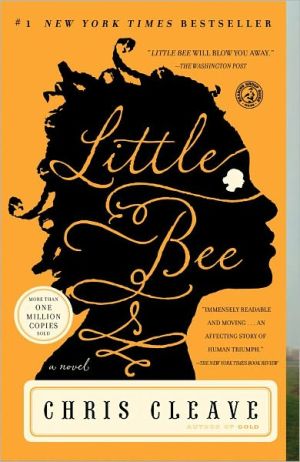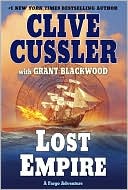The Seeker
It is 1925 and India’s struggle for independence is in disarray, impeded by factionalism among its leaders and rising incidents of unrest across the country. Meanwhile, having withdrawn himself from active politics, Mahatma Gandhi is in an ashram immersed in what he considers the most important undertaking of his life—the creation of a community that is wholly dedicated to the highest standards of self-discipline, tolerance, and austerity.\ Into this world comes a young British woman named...
Search in google:
It is 1925 and India’s struggle for independence is in disarray, impeded by factionalism among its leaders and rising incidents of unrest across the country. Meanwhile, having withdrawn himself from active politics, Mahatma Gandhi is in an ashram immersed in what he considers the most important undertaking of his life—the creation of a community that is wholly dedicated to the highest standards of self-discipline, tolerance, and austerity. Into this world comes a young British woman named Madeline, the daughter of a British admiral. Madeline has set her heart on becoming Gandhi’s greatest disciple. Madeline’s wish to serve him soon becomes an all-consuming desire to be near him at all times. Because her adoration of the great teacher is in direct conflict with his exacting moral and spiritual codes, Gandhi struggles with wanting to distance himself from her, yet wanting not to let go of her love and friendship. Using words preserved in their letters and diaries, and drawing on the reminiscences of others, the author has created a compelling fictional narrative based on the extraordinary friendship that lasted over two decades between these two people. To learn more about the author, Sudhir Kakar, go to www.sudhirkakar.com. Library JournalNovelist and psychoanalyst Kakar (Ecstasy ) successfully employs letters, diaries, and autobiographical accounts to craft this semifictional account of Mohandas Gandhi's platonic relationship with Madeline Slade, a young British woman who leaves her privileged life as an admiral's daughter and becomes one of Gandhi's foremost disciples. In 1925, against the backdrop of India's struggle for independence, Madeline-or Mira, as Gandhi later renames her-joins the spiritual leader's ashram in Gujarat. Mira's Hindi teacher, Navin Prasad, narrates the "factional" story of love and friendship that develops between Gandhi and his disciple. Navin's account of Mira's emotional and spiritual motivations for surrendering to Gandhi are the novel's strongest elements. Where Navin's narrative-and hence, the novel-falls short, however, is in portraying Gandhi's side of the story. Did Kakar's imaginative resolve just fail, or was he being respectful of the Mahatma's image? Either way, Gandhi's intentions toward Mira are never clear, and Kakar's insertion of a tangential story about Mira's infatuation with Indian revolutionary Prithvi Swingh further detracts from this account of an obviously complex relationship. Recommended only for large fiction collections.-Faye A. Chadwell, Oregon State Univ. Lib., Corvallis Copyright 2006 Reed Business Information.
\ Library JournalNovelist and psychoanalyst Kakar (Ecstasy ) successfully employs letters, diaries, and autobiographical accounts to craft this semifictional account of Mohandas Gandhi's platonic relationship with Madeline Slade, a young British woman who leaves her privileged life as an admiral's daughter and becomes one of Gandhi's foremost disciples. In 1925, against the backdrop of India's struggle for independence, Madeline-or Mira, as Gandhi later renames her-joins the spiritual leader's ashram in Gujarat. Mira's Hindi teacher, Navin Prasad, narrates the "factional" story of love and friendship that develops between Gandhi and his disciple. Navin's account of Mira's emotional and spiritual motivations for surrendering to Gandhi are the novel's strongest elements. Where Navin's narrative-and hence, the novel-falls short, however, is in portraying Gandhi's side of the story. Did Kakar's imaginative resolve just fail, or was he being respectful of the Mahatma's image? Either way, Gandhi's intentions toward Mira are never clear, and Kakar's insertion of a tangential story about Mira's infatuation with Indian revolutionary Prithvi Swingh further detracts from this account of an obviously complex relationship. Recommended only for large fiction collections.-Faye A. Chadwell, Oregon State Univ. Lib., Corvallis\ Copyright 2006 Reed Business Information.\ \ \ \ \ Kirkus ReviewsWoven together from fact and fiction, the story of Madeleine Slade, who became Mirabehn, one of Gandhi's most devoted acolytes. Kakar's third novel (after Ecstasy, 2002) uses imagination to connect letters, diaries and reminiscences in establishing the intense relationship between Gandhi-who fought to liberate India from British colonial domination-and a privileged daughter of the English ruling class. Slade's decision to join Gandhi's ashram in 1925, when she was 33, was characteristic of a young woman driven by all-or-nothing attachments (a passion for Beethoven, an unrequited love). After a year's preparation-sleeping on the floor, learning Urdu, spinning wool-she left for India and quickly became a close member of Gandhi's inner circle. Their story is narrated by her Hindi teacher, Navin, who devotes less space to Gandhi's politics and more to the idiosyncrasies of his lifestyle: his obsession with health and cleanliness; his moods; his experimental diet. Mira's feelings for Gandhi are both reverential and possessive; she becomes frantic when separated from him. Their relationship follows a cyclical pattern: When her idolization becomes extreme, he withdraws or sends her away, then forgives her and writes letters expressing deep affection. Navin realizes he is not suited to Gandhi's philosophy of celibacy and leaves the ashram. Later, as the political turmoil intensifies, Mira becomes infatuated with Prithvi Singh, who, despite Gandhi's encouragement, fails to reciprocate her passion. The book ends in 1942, some years before independence, while Mira is last glimpsed in 1968 in an epilogue-now an old woman, retired to Austria, silent on the subject of Gandhi. Odd, elegant butincomplete portraits of a 20th-century icon and his needy disciple.\ \








